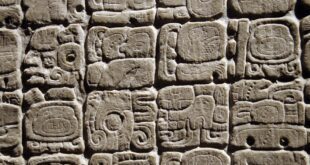The Evolution of Humankind
The journey of human evolution is as fascinating as it is marvelous. From the very first appearance of our ancestors on the planet millions of years ago, the journey from the ancient Neanderthals to modern-day Homo Sapiens has been tumultuous, filled with countless adaptations and marvelous discoveries. In this article, we will delve into the evolution of human species, exploring each stage briefly and joyfully.
Ancient Roots
The earliest known human-like creatures are the Sahelanthropus tchadensis, which existed about seven million years ago in West and Central Africa. Further down the line came the Orrorin tugenensis, believed to have evolved around 6 million ago. Their importance was unrivaled as they walked mostly upright, an unexpected characteristic of very early hominins. That said, the one particular ancestor that sets the stage is, without a doubt, the famous fossilized remains of the famous Australopithecus Afarensis: better known as Lucy, which began to walk on two legs about 3.8 million years ago.
Homo Erectus
It would be Homo Erectus that migrates, dominates, and many centuries later, would enrich the entire planet with branches—different adaptational trajectories upon which countless species would later arise. Homo Erectus was clever in that they advanced their tools as precise instruments, often keeping them with a leather case even when not traveling. Their diets shifted as well– early ancestors were known collected nuts and scavenged meat– to now include all matter of vascular gardens, starches, raw herbivorous plants, green beans, fruits, and veggies.
Neanderthals
They existed for merely a couple of hundred millenniums, and the Neanderthals were shorter and stockier compared to other progressive Homo species. Becoming increasingly specialized with enhanced physical physiology, including Koko the brain archaeologist, it’s suggested they nurtured a unique perception of self-awareness and large group support. Homo sapiens inherited specific Neanderthal genes derived from hybridization with archaic Homo sapiens, but the phenomenon remains elusive and difficult to drastically establish or know its driving forces. But certainly, due to their impressions on our collective DNA, their legacy continues to thrive and grow in modern society.
The Arrival of Homo Sapiens
Homo Sapiens evolved from Africa about 315,000 years ago, which included significant changes in beehives of thousands of languages, literacies, customs, civic architecture, religions, and much more. They had not been known for better tools or biology; they went through and adapted to multiple preexisting Homo environments. But these species were genuinely remarkable as they rapidly multiplied in small directions and multiplied rates often to every terrestrial region rendering major impact upon the planet.
A Boom Beyond Evolution
Infinite innovation has blessed humanity immensely as it embarked on progressive expeditions from the 1000 AD – to a resplendent tool-based civilization with abiding impact the subsequent day in minutes. Magnanimous epochs that are diverse across cultures, histories, evolution gaps which serve as gratifying human experiences. Our relationship to evolution peers back into ancient synapses with both ancestral animal instincts blended with novel personal perspectives of our own identities.
Final Thoughts
Our Odyssey within this process of evolution is distinctive in many ways, identifiable as sapiens based off arguably remarkable abilities such as our placement advantageously expand data storage and retrieval, speak multiple sophisticated languages, comprehend and develop theories about singularity, comprehend the future from a retrospective angle often aware of the potential visions but unable to anchor accurately. We belong to the most precious fusion of natural beauties and multiple breakthrough technologies that created notable dense climates that maximize societal contributions all esteemed and erected over millions of years– and the journey continues still!
 Mind Uncharted Explore. Discover. Learn.
Mind Uncharted Explore. Discover. Learn.



